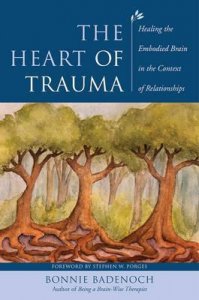
What is at the heart of trauma?
This blog post was written by Dr. Joe Tucci, CEO – Australian Childhood Foundation.
It is not often that the words of a book extend beyond the page they are written on and reach into you to make such sense that their truth reverberates. Every paragraph is just like that in Bonnie Badenoch’s wonderful The Heart of Trauma: Healing the Embodied Brain in the Context of Relationships.
One of my favourite excerpts is the following:

“…for the felt sense and implicit patter to change, we need to not only be in touch with the embedded trauma, but simultaneously be in the presence of what was needed at the time of the trauma but was not available…If we felt alone, we needed a sense of accompaniment. If we were frightened, we needed protection. If we were shamed, we needed acceptance. If we were hurt, we needed comfort. It is as though the part of us who experienced the original rupture of safety has been waiting ever since for the repair to arrive. For this reason, we might call these experiences “restorative” or “reparative”…(p.13)”.
I have said for some time that childhood trauma leaves children with unmet needs. It is like they are on a loop hoping that their needs for safety, attention, validation that were not fulfilled will eventually find at least one relationship in the present that meets those needs consistently and over time. Bonnie has said it so much better.
Her use of the word “accompaniment” is so resourcing for children and young people in particular. We see in the eyes of children the sense of desolation that they experienced as they were left trying to survive the pervasive threat that was inherent in the violation they were forced to endure. It is so clear that they need safe relationships in the here and now that they can lean into and allow to integrate into their body and brains. These are the relationships with foster carers who refuse to give up on them no matter their behaviour. Or the teacher who offers them softness in the face of those calling for discipline to teach them a lesson. Or the counsellor who patiently allows children to set the pace of their exploration of the trauma themes running through them.
Accompaniment is a form of interactive tenderness. It is compassion and understanding realised. It is the orientation that enables us all to prefer approaches that are based on the healing qualities of relationships.
In the heart of trauma are relationships that have hurt. At the heart of healing are relationships which nurture and validate.
I cannot wait to hear Bonnie present her two day workshops in Australia soon in October. They will be resonant with respect for the individual’s own inaudible small acts of resistance against violence and abuse. I expect to hear words that fill my heart with hope.
